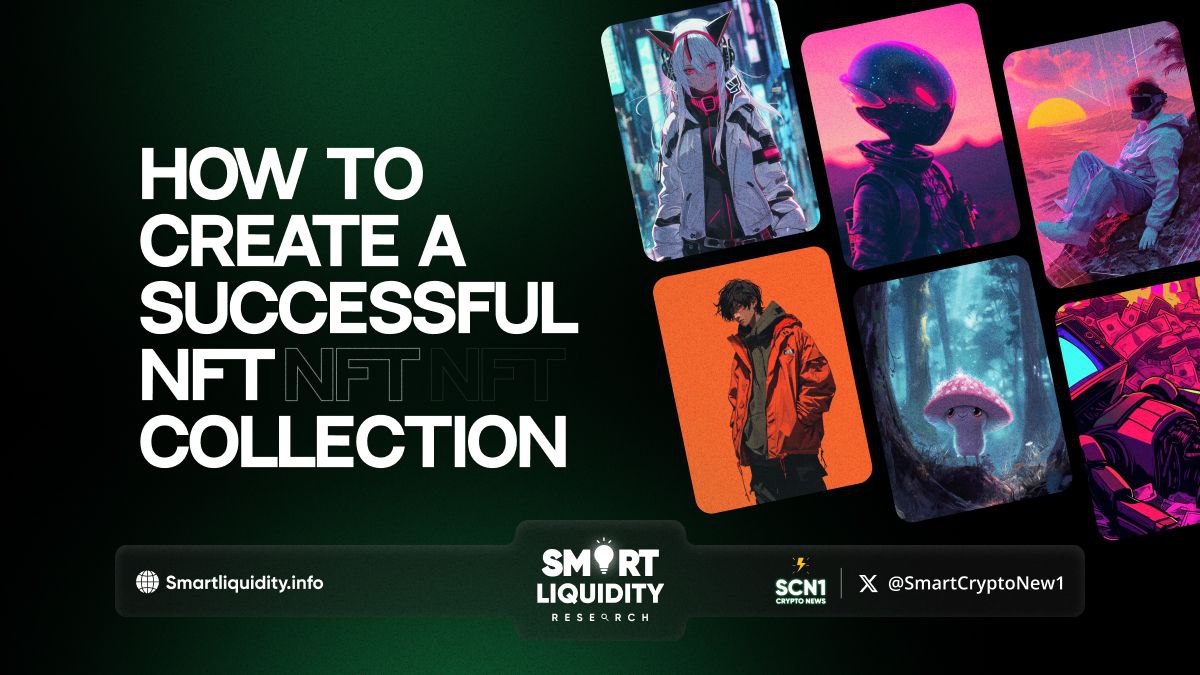How to Create a Successful NFT Collection


How to Create a Successful NFT Collection! Unlocking the Potential of Digital Assets in the Modern Age. In the rapidly evolving digital landscape, Non-Fungible Tokens (NFTs) have emerged as a groundbreaking innovation, revolutionizing how we perceive ownership, value, and authenticity in the digital realm.
From digital art and music to virtual real estate and collectibles, NFTs offer creators unprecedented opportunities to monetize their work and engage with a global audience.
However, with the burgeoning popularity of NFTs comes increased competition. Creating a successful NFT collection isn’t just about minting digital assets; it requires strategic planning, understanding the market, and fostering a community. This article will guide you through the essential steps to conceptualize, develop, and launch a thriving NFT collection.
Table of Contents
- Understanding NFTs
- Conceptualizing Your NFT Collection
- Choosing the Right Platform and Blockchain
- Designing and Creating Your NFTs
- Setting Up Digital Wallets
- Minting Your NFTs
- Pricing Strategies
- Marketing and Community Building
- Ensuring Legal Compliance
- Post-Launch Strategies
- Conclusion
1. Understanding NFTs
Non-fungible tokens (NFTs) are unique digital assets verified using blockchain technology. Unlike cryptocurrencies like Bitcoin or Ethereum, which are fungible (identical and interchangeable), NFTs represent one-of-a-kind items, ensuring authenticity and ownership.
Key Characteristics:
- Uniqueness: Each NFT has distinct information or attributes, making it irreplaceable.
- Indivisibility: NFTs cannot be divided into smaller denominations.
- Ownership: Blockchain ensures transparent and verifiable ownership history.
2. Conceptualizing Your NFT Collection
Before diving into creation, it’s crucial to establish a clear concept for your NFT collection.
Steps:
- Identify Your Niche: Determine the theme or category, such as digital art, music, virtual real estate, or collectibles.
- Research the Market: Analyze successful NFT collections to understand trends, pricing, and audience preferences.
- Define Your Unique Selling Proposition (USP): What sets your collection apart? It could be the art style, underlying story, utility, or community benefits.
- Set Clear Goals: Are you aiming for artistic recognition, community building, or financial gain?
3. Choosing the Right Platform and Blockchain
Selecting the appropriate platform and blockchain is pivotal for the success of your NFT collection.
Popular Blockchains:
- Ethereum: The most widely used, offers robust smart contract capabilities but can have high gas fees.
- Solana: Known for scalability and low transaction costs.
- Binance Smart Chain (BSC): Offers faster transactions with lower fees.
- Flow: Designed specifically for digital collectibles and games.
NFT Marketplaces:
- OpenSea: The largest NFT marketplace, supports various blockchains.
- Rarible: Community-owned platform with its governance token.
- Foundation: Invitation-only platform focusing on digital art.
- SolSea: Solana’s dedicated NFT marketplace.
Considerations:
- Transaction Fees: Higher fees can deter buyers.
- User Base: Platforms with larger communities can offer more visibility.
- Ease of Use: User-friendly interfaces can enhance the buying and selling experience.
4. Designing and Creating Your NFTs
The design phase is where your vision comes to life.
Tips:
- Originality: Ensure your creations are unique to avoid intellectual property issues.
- Quality: High-resolution and detailed designs attract more buyers.
- Formats: Depending on the content, NFTs can be in formats like JPEG, PNG, GIF, MP4, or even 3D models.
- Rarity Tiers: Introducing different rarity levels (e.g., common, rare, legendary) can entice collectors.
- Metadata: Incorporate detailed descriptions, attributes, and unlockable content if applicable.
5. Setting Up Digital Wallets
To interact with NFT platforms, you’ll need a compatible digital wallet.
Popular Wallets:
- MetaMask: Widely used for Ethereum-based NFTs.
- Phantom: Popular for Solana blockchain.
- Trust Wallet: Supports multiple blockchains, including BSC.
Steps:
- Download and Install: Ensure you download from official sources to avoid scams.
- Secure Your Wallet: Safeguard your seed phrases; losing them means losing access to your assets.
- Fund Your Wallet: Purchase cryptocurrency (e.g., ETH, SOL) to cover minting fees.
6. Minting Your NFTs
Minting is the process of publishing your NFT on the blockchain.
Steps:
- Connect Wallet: Link your digital wallet to the chosen NFT platform.
- Upload Content: Add your digital file along with metadata.
- Set Terms: Define royalties (the percentage you earn from secondary sales) and other details.
- Pay Minting Fees: Cover the costs associated with blockchain transactions.
- Verify: Once minted, verify that your NFT appears correctly in your collection.
7. Pricing Strategies
Determining the right price can influence the success of your collection.
Approaches:
- Fixed Price: Set a predetermined price for each NFT.
- Auction: Let buyers bid, potentially driving up the price.
- Tiered Pricing: Based on rarity or added utilities.
Considerations:
- Market Research: Analyze similar NFTs for pricing benchmarks.
- Perceived Value: High-quality and unique NFTs can command higher prices.
- Flexibility: Be prepared to adjust prices based on demand and feedback.
8. Marketing and Community Building
A well-executed marketing strategy can amplify your collection’s reach.
Strategies:
- Social Media Presence: Utilize platforms like Twitter, Instagram, and Discord to engage with potential buyers.
- Collaborations: Partner with influencers, artists, or other NFT creators.
- Teasers and Previews: Build anticipation by sharing sneak peeks.
- AMA Sessions: Host “Ask Me Anything” sessions to interact directly with the community.
- Airdrops and Giveaways: Offer free NFTs or other incentives to early supporters.
- Consistent Engagement: Regularly update and interact with your audience.
9. Ensuring Legal Compliance
Navigating the legal landscape is crucial to avoid potential pitfalls.
Considerations:
- Intellectual Property Rights: Ensure you have the rights to the content you’re minting.
- Tax Implications: Understand the tax obligations associated with NFT sales in your jurisdiction.
- Terms of Service: Clearly outline terms for buyers, especially if the NFT includes additional utilities or rights.
- Regulatory Compliance: Stay updated on evolving regulations related to digital assets.
10. Post-Launch Strategies
Launching your NFT collection is just the beginning.
Tips:
- Monitor Performance: Track sales, feedback, and market trends.
- Engage with Buyers: Foster a sense of community among collectors.
- Plan Future Drops: Regularly introduce new NFTs or series to maintain interest.
- Offer Utilities: Enhance the value of your NFTs by providing added benefits, such as access to exclusive content or events.
- Stay Updated: The NFT space evolves rapidly; stay informed about new technologies, platforms, and trends.
11. Summary
Creating a successful NFT collection is a multifaceted endeavor, blending creativity, strategy, and community engagement. As the digital frontier continues to expand, NFTs offer unparalleled opportunities for creators to showcase their work, connect with global audiences, and redefine value in the digital age.
By meticulously planning, understanding your audience, and staying adaptable, you can navigate the dynamic world of NFTs and carve out a space for your unique creations.
“Embark on your NFT journey today, and let your creativity resonate across the digital cosmos.”




